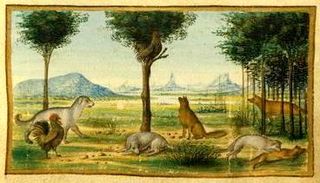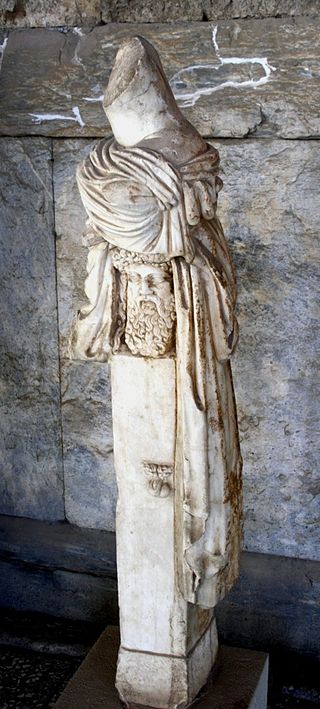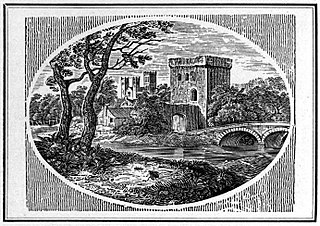
Avianus a Latin writer of fables, identified as a pagan.

Aesop's Fables, or the Aesopica, is a collection of fables credited to Aesop, a slave and storyteller who lived in ancient Greece between 620 and 564 BCE. Of diverse origins, the stories associated with his name have descended to modern times through a number of sources and continue to be reinterpreted in different verbal registers and in popular as well as artistic media.

The Boy Who Cried Wolf is one of Aesop's Fables, numbered 210 in the Perry Index. From it is derived the English idiom "to cry wolf", defined as "to give a false alarm" in Brewer's Dictionary of Phrase and Fable and glossed by the Oxford English Dictionary as meaning to make false claims, with the result that subsequent true claims are disbelieved.

"The Tortoise and the Hare" is one of Aesop's Fables and is numbered 226 in the Perry Index. The account of a race between unequal partners has attracted conflicting interpretations. The fable itself is a variant of a common folktale theme in which ingenuity and trickery are employed to overcome a stronger opponent.

The Frog and the Ox appears among Caleb's Fables and is numbered 376 in the Perry Index. The story concerns a frog that tries to inflate itself to the size of an ox, but bursts in the attempt. It has usually been applied to socio-economic relations.
The story and metaphor of The Dog in the Manger derives from an old Greek fable which has been transmitted in several different versions. Interpreted variously over the centuries, the metaphor is now used to speak of one who spitefully prevents others from having something for which one has no use. Although the story was ascribed to Aesop's Fables in the 15th century, there is no ancient source that does so.
The lion's share is an idiomatic expression which now refers to the major share of something. The phrase derives from the plot of a number of fables ascribed to Aesop and is used here as their generic title. There are two main types of story, which exist in several different versions. Other fables exist in the East that feature division of prey in such a way that the divider gains the greater part - or even the whole. In English the phrase used in the sense of nearly all only appeared at the end of the 18th century; the French equivalent, le partage du lion, is recorded from the start of that century, following La Fontaine's version of the fable.

"The Goose that Laid the Golden Eggs" is one of Aesop's Fables, numbered 87 in the Perry Index, a story that also has a number of Eastern analogues. Many other stories contain geese that lay golden eggs, though certain versions change them for hens or other birds that lay golden eggs. The tale has given rise to the idiom 'killing the goose that lays the golden eggs', which refers to the short-sighted destruction of a valuable resource, or to an unprofitable action motivated by greed.

The Farmer and the Stork is one of Aesop's Fables which appears in Greek in the collections of both Babrius and Aphthonius and has differed little in the telling over the centuries. The story relates how a farmer plants traps in his field to catch the cranes and geese that are stealing the seeds he has sown. When he checks the traps, he finds among the other birds a stork, who pleads to be spared because it is harmless and has taken no part in the theft. The farmer replies that since it has been caught in the company of thieves, it must suffer the same fate. The moral of the story, which is announced beforehand in the oldest texts, is that associating with bad companions will lead to bad consequences.

The Tortoise and the Birds is a fable of probable folk origin, early versions of which are found in both India and Greece. There are also African variants. The moral lessons to be learned from these differ and depend on the context in which they are told.

The Fox and the Stork, also known as The Fox and the Crane, is one of Aesop's fables and is first recorded in the collection of Phaedrus. It is numbered 426 in the Perry Index.

The Cock, the Dog and the Fox is one of Aesop's Fables and appears as number 252 in the Perry Index. Although it has similarities with other fables where a predator flatters a bird, such as The Fox and the Crow and Chanticleer and the Fox, in this one the cock is the victor rather than victim. There are also Eastern variants of this story.

The Fox and the Lion is one of Aesop's Fables and represents a comedy of manners. It is number 10 in the Perry Index.
The Fox and the Woodman is a cautionary story against hypocrisy included among Aesop's Fables and is numbered 22 in the Perry Index. Although the same basic plot recurs, different versions have included a variety of participants.
Developed by authors during Renaissance times, the story of an ass eating thistles was a late addition to collections of Aesop's Fables. Beginning as a condemnation of miserly behaviour, it eventually was taken to demonstrate how preferences differ.

The Dove and the Ant is a story about the reward of compassionate behaviour. Included among Aesop's Fables, it is numbered 235 in the Perry Index.

The Frog and the Mouse is one of Aesop's Fables and exists in several versions. It is numbered 384 in the Perry Index. There are also Eastern versions of uncertain origin which are classified as Aarne-Thompson type 278, concerning unnatural relationships. The stories make the point that the treacherous are destroyed by their own actions.

Hercules and the Wagoner or Hercules and the Carter is a fable credited to Aesop. It is associated with the proverb "God helps those who help themselves", variations on which are found in other ancient Greek authors.

There are five fables of ancient Greek origin that deal with the statue of Hermes. All have been classed as burlesques that show disrespect to the god involved and some scepticism concerning the efficacy of religious statues as objects of worship. Statues of Hermes differed according to function and several are referenced in these stories. Only one fable became generally retold in later times, although two others also achieved some currency.

The Fly and the Ant is one of Aesop’s Fables that appears in the form of a debate between the two insects. It is numbered 521 in the Perry Index.
















